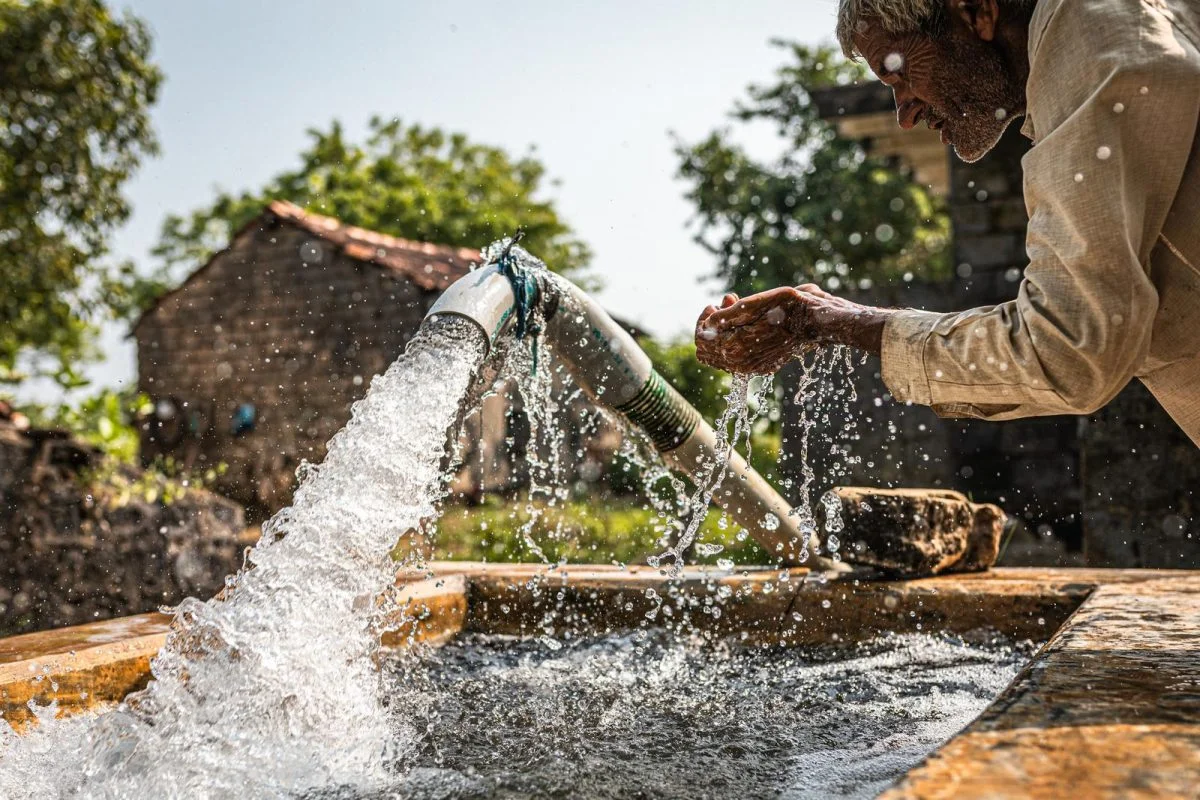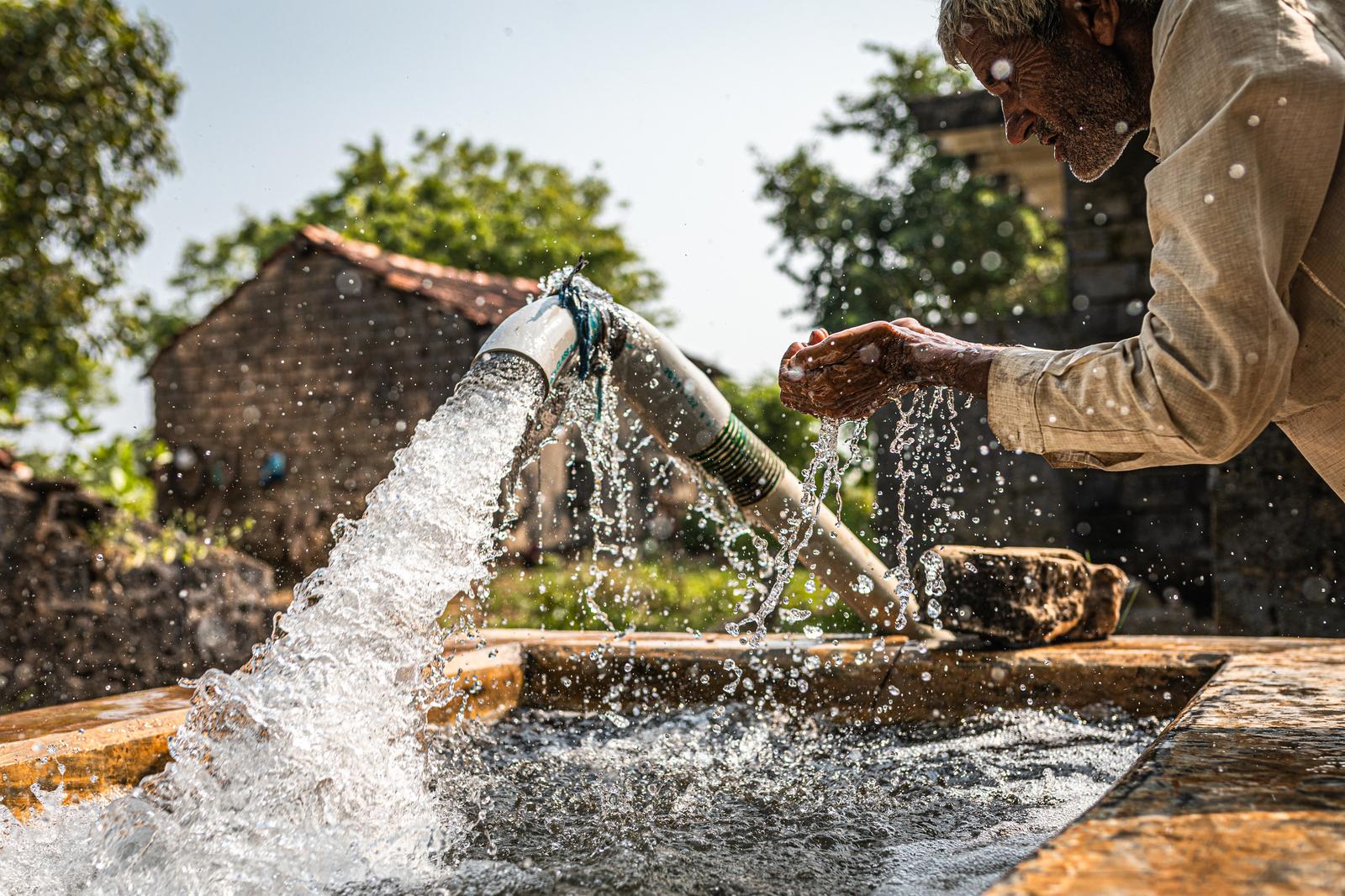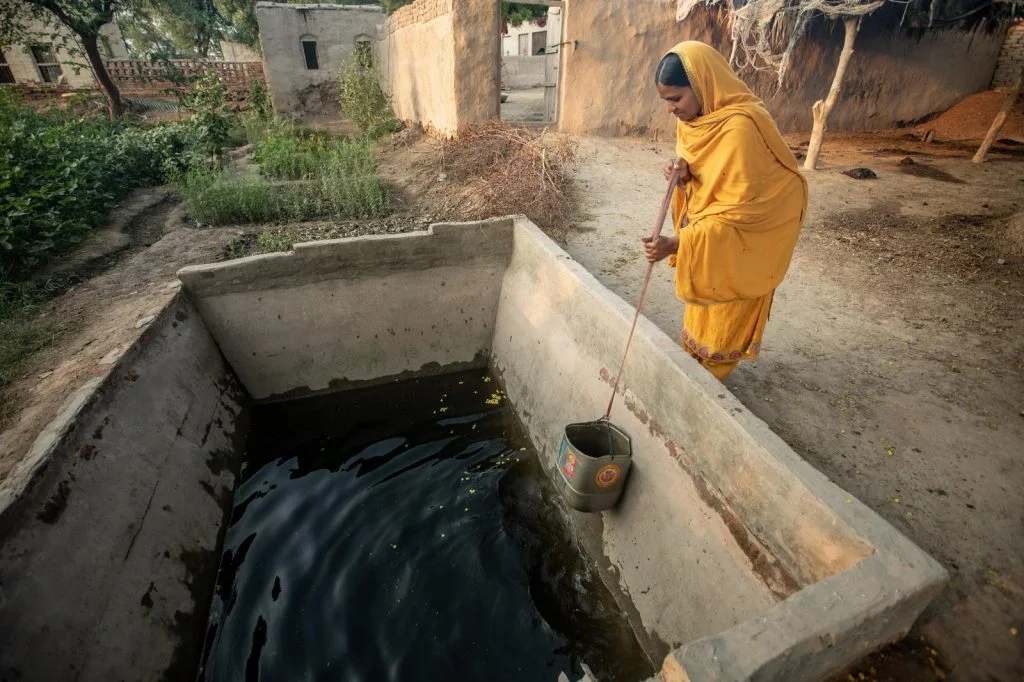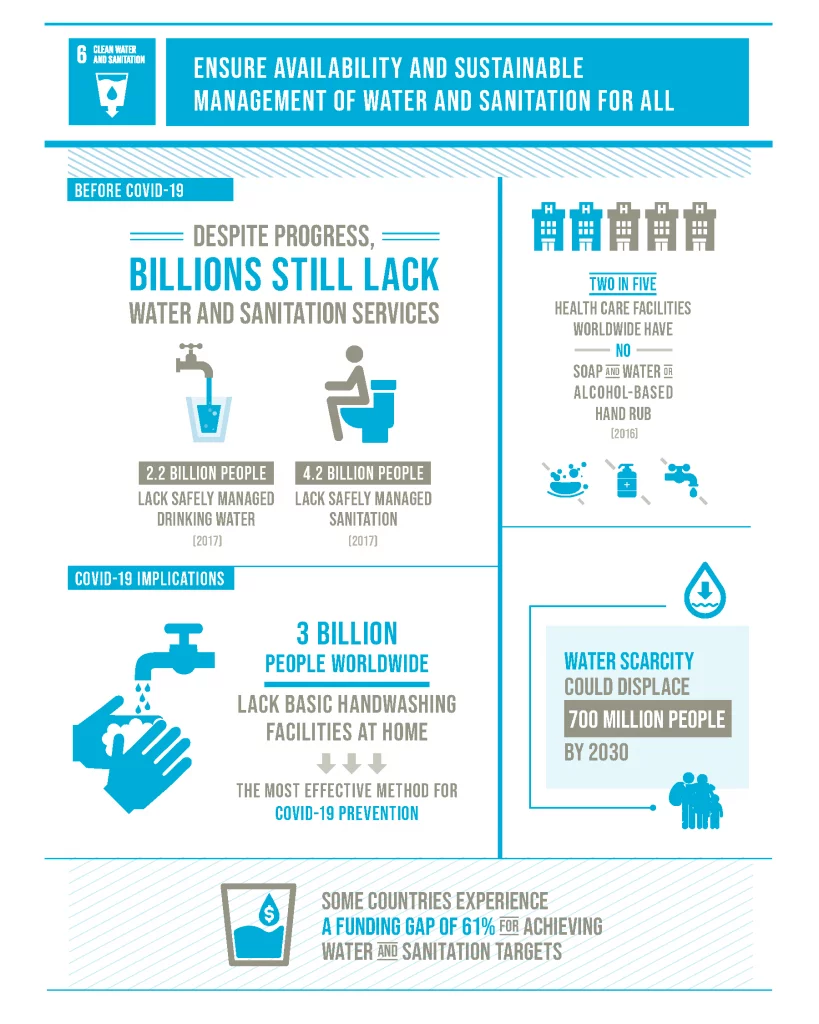


Photo Credit: Better cotton/Vibhor Yadav
Location: Kodinar, Gujarat, India.
About half a billion people around the world currently face severe water scarcity, and nearly half of the global population lives in regions where freshwater is polluted. Caring for our water resources — both locally and globally — is one of the biggest sustainability challenges of our times.
At the Better Cotton Initiative (BCI), we believe that solutions require a water stewardship approach where individual and collective actions benefit both people and nature.
How Cotton Production Impacts Water Resources
Cotton is a relatively drought tolerant crop and is entirely rainfed in many regions where it grows. However, approximately half of its production area requires some sort of irrigation, and as freshwater becomes an increasingly scarce and precious resource, it is critical to ensure it is used in sustainable ways. Poor irrigation practices, or poor water management more generally, can have devastating, long-term effects on farming activities, on the whole water basin’s environment and on the broader communities who share its water resources.
Cotton production impacts freshwater resources in a few ways:
- The quantity of water used for irrigation (both surface and groundwater)
- The use of rainwater stored in land
- Water quality due to the use of agrochemicals (pesticides and fertilisers)
By implementing sustainable farming practices, farmers can learn how to use water efficiently on both rainfed and irrigated farms to achieve greater yields and consume and pollute less water. This not only contributes to more sustainable water use but also helps farmers improve their livelihoods and build resilience to climate change — something that will become increasingly important as pressure on water supply intensifies.
The BCI Standard System provides farmers with a comprehensive framework for using water in a way that improves yields while conserving resources for them and their community.
The BCI Principles and Criteria require BCI farmers to develop a Water Stewardship Plan to help them implement these water management principles.


A Water Stewardship Plan has five parts:
- Mapping and understanding water resources
- Managing soil moisture
- Using efficient irrigation practices to optimise water productivity
- Managing water quality
- Engaging in collaboration and collective action to promote sustainable water use
Good water stewards understand both their own water use and the catchment context (areas in the landscape where water flows through and is stored, i.e., an aquifer or river basin). By understanding water use in their production area, farmers can practise good water management at the farm level and also take collective action with other water users, such as local communities and authorities
The Impact of BCI Water Stewardship
In the 2018-2019 cotton season, BCI Farmers in four countries used less water for irrigation than Comparison Farmers — from 6% less in Tajikistan to 13% less in India.
WAPRO: A Global Water Stewardship Initiative
One way we address the issue of water in cotton production is by taking part in a unique multi-stakeholder partnership called WAPRO. Led by Helvetas, WAPRO spans 16 countries across Asia and Africa, bringing together 22 partners from the public and private sector.
Using a push-pull strategy that combines market incentives and public policy advocacy with on-the-ground farmer training, the project encourages water stewardship and action at every level of the global supply chain.
Helvetas and the Alliance for Water Stewardship implemented the WAPRO framework in Tajikistan. Through the initiative, some farmers invested in tubular irrigation to help direct water to their plants more precisely. This tactic enabled BCI Farmer Sharipov Habibullo to save 1.8 million litres of water per hectare of cotton in the 2018-19 cotton season, or roughly two-thirds of an Olympic swimming pool. Read Sharipov’s story
Water stewardship in practice in India
In Gujarat, India, monsoon rains are becoming less predictable, making water for farming harder to come by. Our Programme Partner in the region — the Coastal Salinity Prevention Cell (CSPC) — translated the BCI water stewardship vision into on-the-ground action, supporting 11,000 BCI Farmers in the area.
Implemented through the WAPRO project, the CSPC team taught water-saving practices to farmers, including drip and sprinkler irrigation technologies that direct smaller, more exact amounts of water to crops. CSPC also promoted irrigating alternate furrows (small trenches). With this technique, farmers plant crops on ridges and only need to irrigate every other furrow in between. On the community level, CSPC played a game with around 6,500 children at local schools that taught key messages about sustainable water use.
How BCI Contributes to the Sustainable Development Goals
The United Nation’s 17 Sustainable Development Goals (SDG) outline a global blueprint for achieving a sustainable future. SDG 6 states that we should ‘ensure availability and sustainable management of water and sanitation for all’. Through our water stewardship approach, the BCI Principles and Criteria help farmers understand existing and future water risks when developing climate adaptation strategies for water management. By supporting farmers in developing Water Stewardship Plans that consider pesticide application, fertilisation and soil management, we are helping communities around the world protect and conserve precious water resources.


Learn More
- About the BCI Principles and Criteria
- About our water impacts in the Better Cotton Initiative Farmer Results Report
- Read these stories from the field on water:
Image credit: all United Nations Sustainable Development Goal (UN SDG) icons and infographics were taken from the UN SDG website. The content of this website has not been approved by the United Nations and does not reflect the views of the United Nations or its officials or Member States.







































